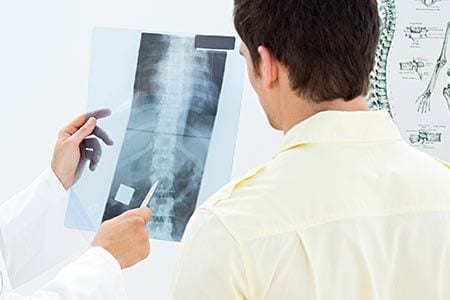
X-rays, or radiographs, can be a useful tool for chiropractors in diagnosing spine and joint problems. Let's look at why, when and how chiropractors may use X-ray technology in practice.
Why
Chiropractors may take (or refer you out for) X-rays if they feel the results would impact the diagnosis or treatment of your condition. X-rays allow us to see bones, joints and the spaces in between them. With these images, we can look at the bone and joint structures themselves for problems, measure important angles and evaluate how alignment affects various joints, especially in the spine.
We can also detect arthritic changes in the spine, which can paint a bigger health picture related to your symptoms. It is important to catch arthritis early so that lifestyle and treatment recommendations can be made to help prevent further degeneration. Tumor growth may also be detected and, again, is best detected at an early stage before more serious problems occur.
When
Whether or not X-rays are ordered depends on many factors. X-rays are recommended when needed to confirm a diagnosis or look more closely at an area of pain. And some health conditions, whether or not they cause pain, can only be properly seen with imaging. These include arthritis, bone spurs and abnormal growth, development or curvature of the spine.
The “mechanism of action”—how your pain or other symptoms started—is another factor when determining the need for X-rays. If you were in an accident or suffered another traumatic event, X-rays may be requested. It is important to rule out serious injury before being treated. Also, if you have symptoms but do not remember injuring yourself, if you have pain or other symptoms that are not responding to treatment, or if it's suspected that your symptoms are related to arthritis, an X-ray may help determine the cause.
Because there is a small amount of radiation exposure, X-rays are not taken unless they are medically necessary, and only of the specific area of the body that is being examined. The technician is trained to minimize the amount of radiation exposure.
How
The process of getting X-rays is quick and not painful. Before the X-rays are taken, it is important to tell your physician if you are pregnant or think you may be pregnant. Once you are cleared for the X-ray, you will need to remove any jewelry from the area of the body to be imaged, and you may need to remove certain items of clothing (you will be provided with a gown if needed). You will be positioned for the least amount of movement to assure that the images are taken quickly and accurately. There will likely be a series of two or more positions that you will hold for each area being x-rayed, which allows us to see the bones and joints from different angles.
After the radiographs have been taken, the results will provide information about your spine, its curvature and levels of degeneration (arthritis). These results determine the current condition of your spine and may help guide your treatment.
Spine Changes Detected via X-Ray
Chiropractic X-rays are important in identifying degeneration of the spine (osteoarthritis). Once degeneration has occurred, it cannot be reversed. Similar to a cavity in a tooth, the earlier the degeneration or other bony changes are found, the faster we can correct and restore normal joint motion and slow down further degeneration.
There are three phases of spinal degeneration:
- In phase 1, the discs (cartilage) between the vertebrae begin to lose volume because they are no longer holding fluid the way a normal disc would.
- In phase 2, we begin to see bony changes on an X-ray. These changes may include vertebrae appearing closer together because the discs are thinning out and possibly bulging; bone spurs, which appear like a rough edge of vertebrae; and a change in the natural curve of the spine.
- In phase 3 of spinal degeneration, the vertebrae may appear very close together, sometimes as a fused vertebra with no visible disc. More significant bone spurring may be visible in the X-ray. At this stage, a surgical consultation may be warranted.
As the degenerative process progresses, disc herniation, bone spurring and the possibility of nerve impingement become more likely. Diagnosing degeneration early is important. Although we cannot reverse degeneration, we can work to reduce or prevent it from continuing.
X-rays can be a very useful clinical tool in diagnosing and treating several spine and joint conditions, but they are not necessary for every patient. We can talk with you about the benefits and risks of X-rays and whether or not they are needed for your care.

